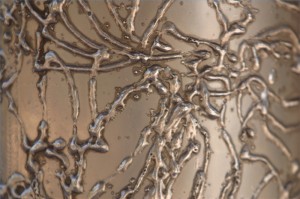Copper and copper-nickel alloys are most often welded with the manual metal arc process, using a stick electrode coated with flux. This method is relatively inexpensive, but the metal inert gas process is faster and the tungsten inert gas process is used to make strong welds in complex joints.
Difficulty: Challenging
Instructions
1. Employ 70-30 copper-nickel filler for alloys that contain at least 70 percent copper. The weld metal will be stronger than the base metal because of the higher nickel content. Use a longitudinal bend test to evaluate the strengths of test welds.
2. Remove all traces of elements that can cause cracking, especially lead, phosphorus and sulfur. This includes materials such as cutting fluids, grease, oil and paints. Copper-tin-zinc alloys are a source of these elements and should not be welded to copper-nickel alloys.
3. Use a square butt preparation to weld copper-nickel that is less than 3 mm and employ a beveled preparation for thicknesses greater than this.
4. Make the included angle wider than for carbon steel, usually greater than 70 degrees. The weld metal is not as fluid as those for carbon steels and will require more manipulation with the electrode to cause it to fuse with the side walls.
5. Weld down-hand if possible. This will allow a greater deposition rate and usually requires less skill. In the event that the structure is too large to turn, sub-assemblies should be manipulated for down-hand welding instead of operating in a less favorable position.
Submitted by Josh, Ajax Welding

